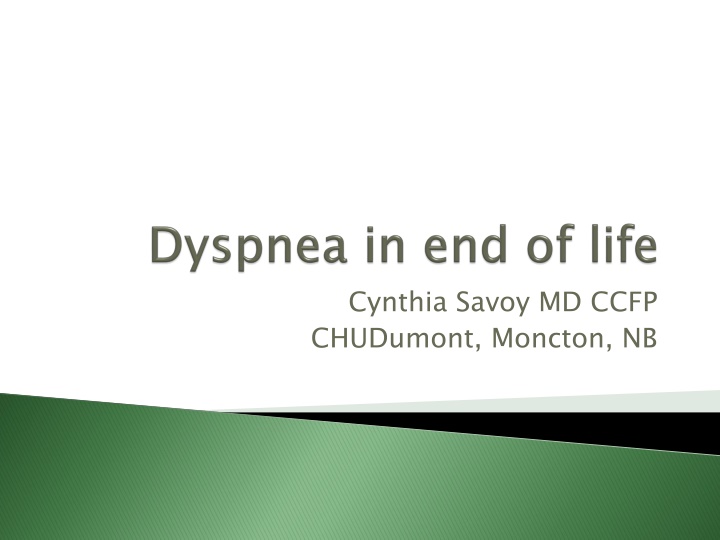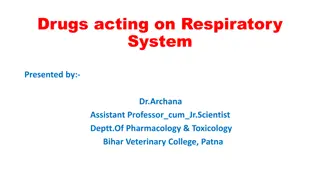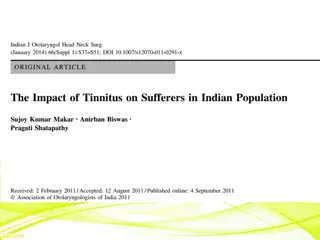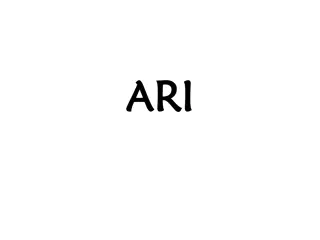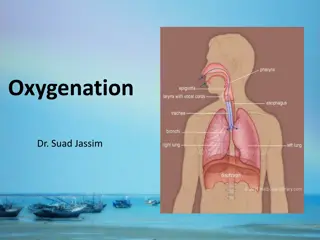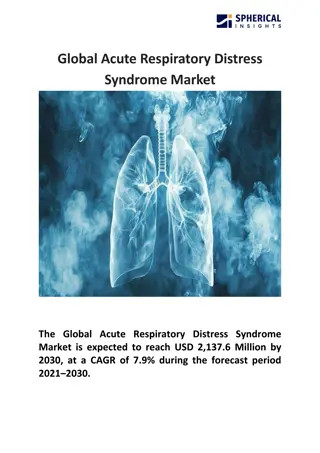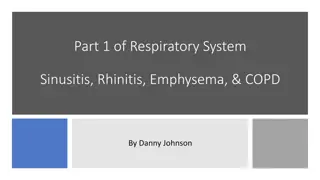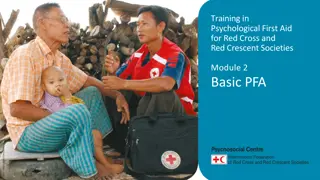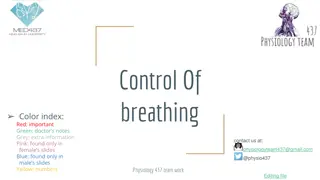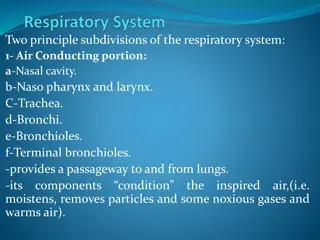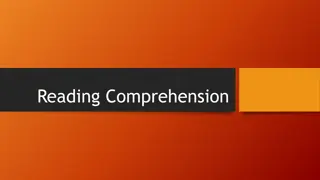Managing Respiratory Distress in End-of-Life Care
Respiratory distress is a common issue in end-of-life care, often causing significant distress to patients and their families. Understanding the causes, utilizing opioids for dyspnea management, implementing non-pharmacological measures, and knowing when to use a distress protocol are crucial in providing effective care. Dyspnea, a subjective sensation, requires reliance on the patient's self-report for assessment. Healthcare providers must prioritize patient communication and comfort in the management of respiratory distress.
Download Presentation

Please find below an Image/Link to download the presentation.
The content on the website is provided AS IS for your information and personal use only. It may not be sold, licensed, or shared on other websites without obtaining consent from the author.If you encounter any issues during the download, it is possible that the publisher has removed the file from their server.
You are allowed to download the files provided on this website for personal or commercial use, subject to the condition that they are used lawfully. All files are the property of their respective owners.
The content on the website is provided AS IS for your information and personal use only. It may not be sold, licensed, or shared on other websites without obtaining consent from the author.
E N D
Presentation Transcript
Cynthia Savoy MD CCFP CHUDumont, Moncton, NB
Youre called to Mr. LeBlancs bedside (79 yo) Known for COPD and is a smoker x past year, Dx of adenocarcinoma of the lung with local and bone metastases. Bedridden Poor feeding He is short of breath, tachypneic, is coughing and spitting He looks like he is suffocating. His family is panicking What do you do?
List causes of respiratory distress in end of life Describe the role of opioids in the management of dyspnea Describe the use of non pharmacological measures Determine when the use of a distress protocol would be appropriate
Varies depending on underlying condition COPD: 95% Congestive Hear Failure: 61% ALS: 50% Dementia: 70% Stroke: 37% Cancer: 50-70%
67 yo man with lung cancer? 83 yo woman with COPD and O2 sat. at 90%? 72 yo woman with heart failure and pulmonary oedema? 81 yo man with myelodysplasic syndrome and Hb at 76? 59 yo woman having a panic attack?
Respiratory Rate? Oxygen Saturation? Arterial Blood Gas? Visual rating scale? All of the above? None of the above?
Like pain, dyspnea is SUBJECTIVE sensation. I can t breath! The only reliable measure of dyspnea is the patient s self-report. No tests correlates well with the sensation of being short of breath.
Doctors: 28% Nurses: 35% Volunteers: 43% Always rely on the patient!
Complex and still not well understood Central chemoreceptors (acidosis) Peripheral chemoreceptors (In carotids and aorta are sensitive to hypoxia) Thermoreceptors in upper respiratory tract Mechanical receptors in the airways are sensitive to opioids Muscular mechanical receptors (diaphragm, thoracic muscles)
Always screen for dyspnea Trajectory (rapid, gradual) Type (intermittent, continuous) Severity Alleviating and exacerbating factors Concurrent symptoms Contributing psycho-socio-spiritual factors Impact
Physical Exam Investigations depending on appropriateness Chest X-Ray O2 saturation CT scan Cardiac echo Bronchoscopy Spirometry Arterial Blood Gas
Airway obstruction Pleural effusion COPD Pneumonia Lung cancer and metastases Lymphangitic carcinomatosis Pulmonary Emboli Pneumothorax Aspiration Cardiac causes (CHF, pericardial effusion) Systemic causes (anemia) Neurological causes (ALS, muscle wasting) Metabolic causes (anemia, acidosis, low Mg, low calcium) Psychological causes (Anxiety, hyperventilation) Pulmonary Causes Extra-thoracic causes
Be a calming presence for patient and family Fan Position, upright Limit the number of people in room Loosen or remove tight clothing Lower room temperature Position by a window Open curtains Avoid air irritants Respiratory exercises
Oxygen Opioids Adjuvant therapies Bronchodilators and inhaled steroids Steroids Phenothiazine Benzodiazepines Diuretics Non-invasive ventilation
Decrease sensation of shortness of breath Act on the respiratory center Clinical studies have confirmed that opioids are safe and useful at appropriate doses and when judiciously titrated Effective not only in advanced cancer patients but also in ALS, and terminal cardiac or pulmonary diseases
Same model as for pain control Regular dose with Break-through (BT) dose prn Start with low dose ex: morphine 2,5-5mg po q 4h and 2,5mg po q 1h prn Titrate gradually and even slower in non- cancer patients Do not forget a laxative and anti-emetic A patient already on opioids can have a 25% increase in their dose.
Conversions COD INE/ Tramadol 10 X 10 MORPHINE X2 5 2 X 5 OXYCODONE 2 HYDRO- MORPHONE X2 FENTANYL Palli-sciences
PO to SC is 2:1 Hydromorphone 2mg sc= hydromorphone 4mg po Morphine 20mg po=Morphine 10mg sc PO to IV is 3:1 If we switch opioids we must first convert and then decrease the dose by 20-50% Be mindful of dose limits when using combination medication (ex. Tramacet) Codeine and Tramadol have limits
Death rattle Caused by the accumulation of secretions in patients who are too weak to expectorate Glycopyrrolate (R Robinul): 0,2-0,6 mg sc q 2h prn Hyoscine hydrobromide (S Scopolamine): 0,2-0,6 mg sc q2h prn or patch q72h *Atropine 1% 1-2 drops SL q2h prn
Benzodiazepine die or weight <70kg-------5mg sc >die or weight > 70kg-----10mg sc Opiac 0-3mg sc q4h------------5mg sc 4mg sc q4h-------1,5x la dose sc q4h Si hydromorphone 0-1mg sc q4h------------1mg sc >1mg sc q4h-------1,5x the dose sc q4h Benzodiazepine (Midazolam-Versed) Opiac Si morphine Rx2 (max 50mg) q15min (max 10mg) Anticolinergique Robinul or Scopolamine----0,6mg sc
Dyspnea is according to patients description Dyspnea is linked to many diseases Opioids are the most useful drugs in the tx of dyspnea O2 is useful in hypoxic patients Non pharmacological management is essential
